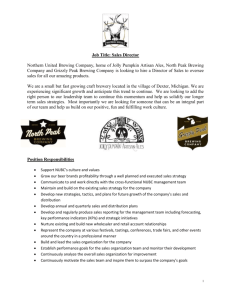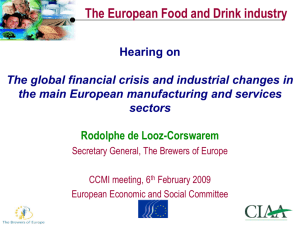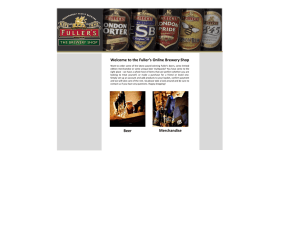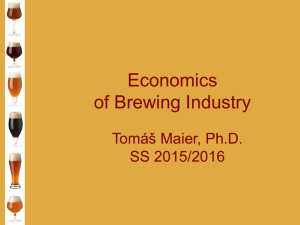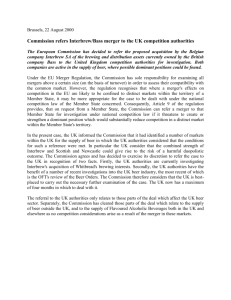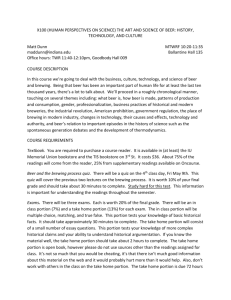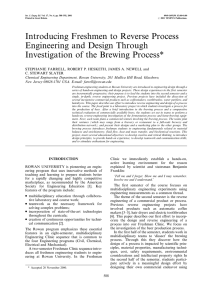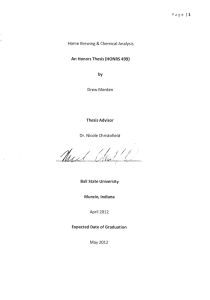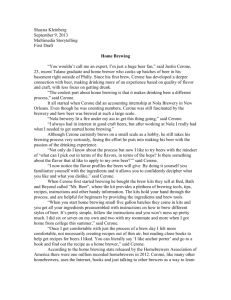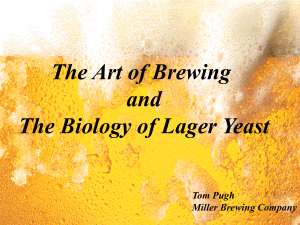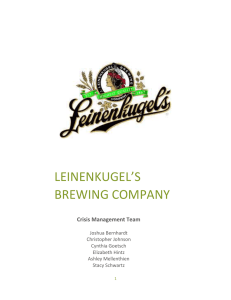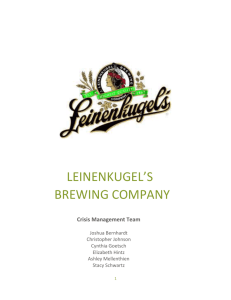Beer Bread and Cheese Test 1 Review, Spring 2015 History and
advertisement
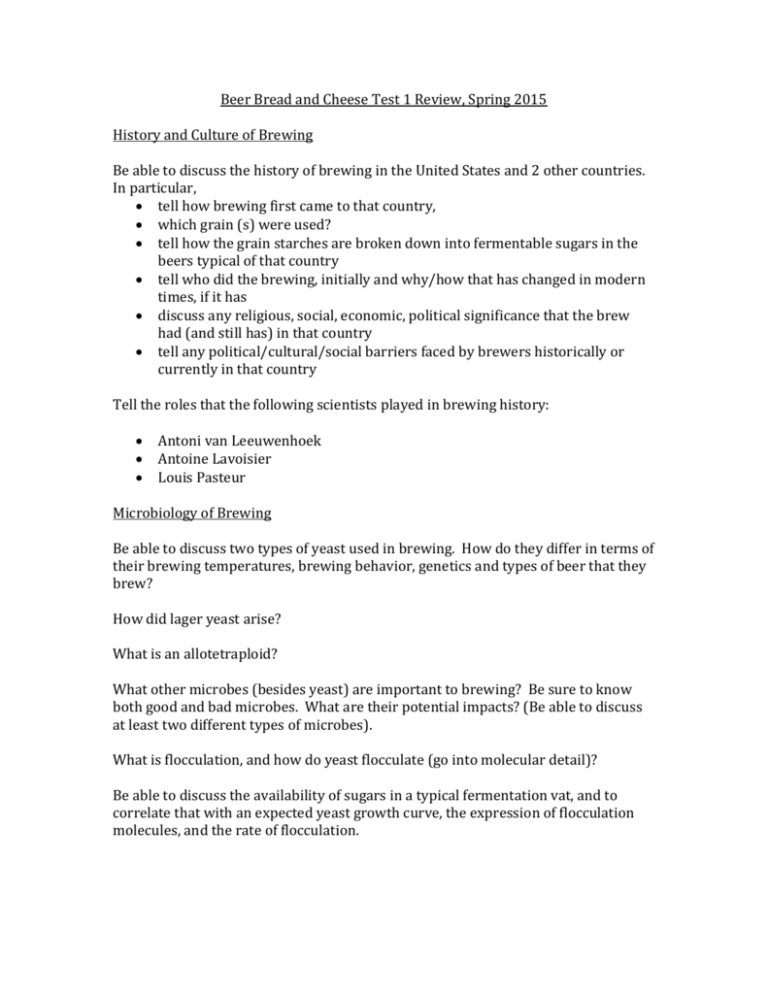
Beer Bread and Cheese Test 1 Review, Spring 2015 History and Culture of Brewing Be able to discuss the history of brewing in the United States and 2 other countries. In particular, tell how brewing first came to that country, which grain (s) were used? tell how the grain starches are broken down into fermentable sugars in the beers typical of that country tell who did the brewing, initially and why/how that has changed in modern times, if it has discuss any religious, social, economic, political significance that the brew had (and still has) in that country tell any political/cultural/social barriers faced by brewers historically or currently in that country Tell the roles that the following scientists played in brewing history: Antoni van Leeuwenhoek Antoine Lavoisier Louis Pasteur Microbiology of Brewing Be able to discuss two types of yeast used in brewing. How do they differ in terms of their brewing temperatures, brewing behavior, genetics and types of beer that they brew? How did lager yeast arise? What is an allotetraploid? What other microbes (besides yeast) are important to brewing? Be sure to know both good and bad microbes. What are their potential impacts? (Be able to discuss at least two different types of microbes). What is flocculation, and how do yeast flocculate (go into molecular detail)? Be able to discuss the availability of sugars in a typical fermentation vat, and to correlate that with an expected yeast growth curve, the expression of flocculation molecules, and the rate of flocculation. Biochemistry of Brewing Be able to outline all the biochemical steps in glycolysis (chemical structures are not necessary, but you must know all enzymes, intermediates, substrates and products and the steps in which the products are made) Be able to discuss in detail the biochemical and biological changes that happen in each step of the brewing process: Malting – know enzymes involved, and what happens to the macromolecules in the barley grain, as a result Roasting the Malt – know what biochemical changes occur, and what impact they have on the final beer product Mashing – know what happens in each temperature step Boiling – know what happens to the hops acids and oils in this step. What else that is incredibly important happens to beer when you boil it? Fermentation – know the biochemical reactions involved in alcoholic fermentation, including enzymes. Be able to discuss how beer foam forms, and how barley and yeast proteins play a central role. Be able to list at least 2 other beer components that impact foam and tell where they come from in the brewing process. Chemistry and Biochemistry of Beer Ageing Be able to discuss at least two completely different types of bacteria and their detrimental impacts on beer. Be able to discuss how hops degrade during beer aging, in particular The differences between the ageing of cis and trans-iso-alpha-acids, and the impact that this has on beer flavor over time How light-struck flavor develops in beer, and how to prevent it What is oxidation? How does it impact non-hops ingredients? What are melanoidins and how do they form? How can ‘hot side’ oxidation be minimized? How can ‘cold side’ oxidation be minimized? What is Trans-2-nonenal, and what are the biochemical reactions that lead to its formation? What is the final flavor impact of this product? How can these types of oxidation be prevented? Beer Haze What is Chill Haze, and how does it form? How does cooling wort quickly help to prevent this? What types of events can cause permanent haze? Be able to discuss 2. Be able to discuss fining agents, processes, and to tell how they work.
